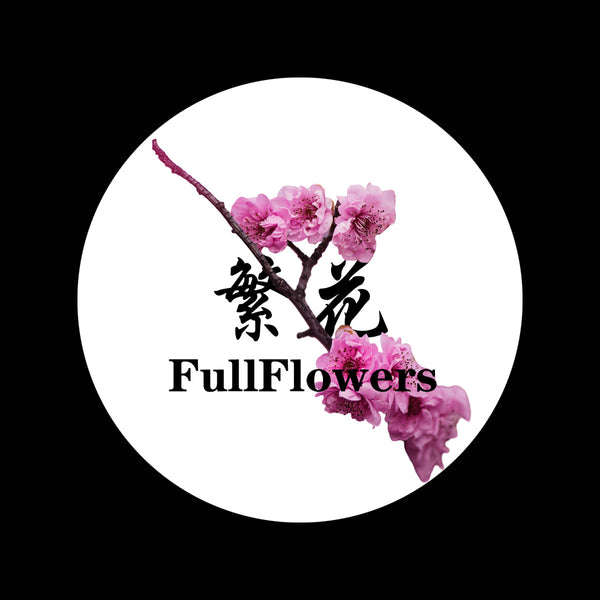
Characteristics and Applications of Chanhua
Share
To this day, Chanhua remains beloved for its luxurious and delicate appearance. However, with societal development, Chanhua has displayed new characteristics and expanded beyond traditional folk uses to practical functions. This section will help readers further understand the features of Chanhua and introduce its wide applications in modern society.
1.2.1 Characteristics of Chanhua
Chanhua often adopts floral shapes, hence the name "Chanhua" (literally "entwined flowers").

The image above shows the wearing effect of Chanhua in floral and plant shapes. The designs of Chanhua are very diverse, including not only the most common floral shapes but also animal forms and auspicious patterns.
The production process of Chanhua is simple, and the required materials are very common, such as hard cardboard, iron wire, and silk threads, which are easily obtainable in daily life.
In terms of craftsmanship, Chanhua integrates various traditional techniques, combining the skills and features of painting, paper cutting, embroidery, and sculpture. The maker first draws a pattern and then transfers it onto hard cardboard using transfer paper, then cuts it out with scissors. After this step, the formal process of "entwining" begins. The Chanhua process is somewhat similar to embroidery, requiring the thread to be entwined in a certain sequence and direction, and it must be tight and dense, making Chanhua a unique form of embroidery. When creating three-dimensional Chanhua designs, the maker uses sculptural techniques to obtain a topological map, completes each part separately, and then assembles the whole shape.

The image above shows a grasshopper-shaped Chanhua, which is composed of multiple parts, making the grasshopper appear very lifelike.
Currently, with the addition of modern technology, the difficulty of making Chanhua has been reduced. Makers can directly buy pre-printed cardboard templates, or even pre-cut templates. This greatly speeds up the production of Chanhua and increases its output. On one hand, the increase in output helps Chanhua overcome the challenge of long production times and high demand, expanding its audience. On the other hand, it also makes it easier for people to learn the Chanhua craft and create their own Chanhua, experiencing its charm.
 The image above shows a beautifully crafted Chanhua
The image above shows a beautifully crafted Chanhua
When storing and maintaining Chanhua, the following three points should be noted: first, Chanhua is easy to deform but also easy to reshape, so it must be stored carefully; second, it should be kept away from oil and dust, as the silk threads on the surface can get dirty easily, requiring careful handling; third, it should be kept away from water, as water can soften the cardboard inside Chanhua, causing it to lose its support. Therefore, when wearing Chanhua accessories, avoid pressing them hard and keep them dry. When displaying Chanhua as decorations, use dust covers to extend their lifespan.
 The image above shows a floral-shaped Chanhua
The image above shows a floral-shaped Chanhua
1.2.2 Applications of Chanhua
Besides its use in folk traditions, Chanhua is also widely recognized as an accessory for Hanfu (traditional Chinese clothing). From the revival of Hanfu to its everyday use, the development of Hanfu culture has brought many new business opportunities, especially in accessories that complement Hanfu.
 The model in the above image is wearing Hanfu and Chanhua, showing how well they match and enhance each other.
The model in the above image is wearing Hanfu and Chanhua, showing how well they match and enhance each other.
Several reasons explain why Chanhua has become an essential Hanfu accessory: first, Chanhua and Hanfu are highly compatible; its varied shapes and auspicious meanings can be customized to match specific outfits. Second, Chanhua is more affordable than gold, silver, and jade accessories. Third, Chanhua has unique advantages: it is more colorful than copper accessories, softer than heat-shrinkable flower accessories, and more rigid than Ronghua accessories.
Chanhua is also widely used as a decoration. Some people like to make it into brooches to adorn formal dresses; others prefer to make it into ornaments as part of home decor. As an intangible cultural heritage, Chanhua is also given as a gift to show thoughtfulness.
 The image above shows a modern Chanhua craft in the shape of a flower branch.
The image above shows a modern Chanhua craft in the shape of a flower branch.
To make Chanhua more widely known, we need to create more practical Chanhua for daily life, expanding its application range and serving the public. This requires the collective effort of every Chanhua maker.
In today's society, learning the Chanhua craft not only helps inherit and promote intangible cultural heritage, allowing excellent traditional culture to continue and thrive, but also serves as a side business to increase income and create economic benefits, achieving multiple goals at once.








